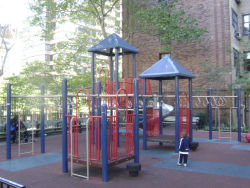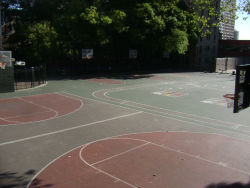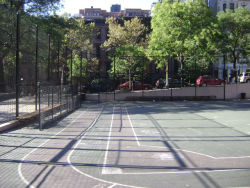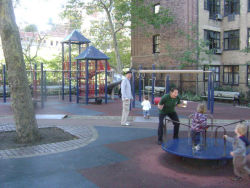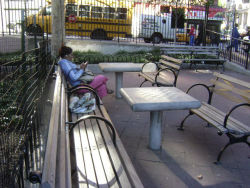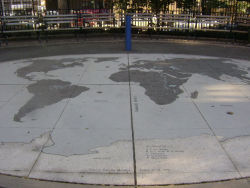Samuel Seabury Playground
Samuel Seabury Playground
This playground honors the late Judge Samuel Seabury (1873-1958), a renowned public servant who was a direct descendent of the first American Episcopal bishop, Dr. Samuel Seabury III. Samuel Seabury was born in Manhattan, where he attended local private schools. Barely twenty years old, he graduated from New York Law School in 1893. Later that year, he was admitted to the New York Bar. Acknowledging the rampant corruption plaguing the New York court system, Seabury led several reform campaigns against Tammany Hall, the downtown political organization run by the notorious “bosses” of the New York City Democratic Party, William M. Tweed (1823-1878) and John Kelly (1822-1886).
In 1901, at twenty-eight, Seabury was elected to the New York City Court. Six years later, he was elected to the New York State Supreme Court, and in 1914, he was elected an associate judge of the Court of Appeals. In 1916, Seabury ran for Governor of New York, relinquishing his seat on the Court of Appeals. He lost the election, largely because he did not have the support of the Tammany Hall political machine. Soon after his defeat, Seabury found a lucrative private practice in arguing cases on appeal.
In 1930, at the request of the appellate division of the New York court system, Seabury returned to public service leading a series of investigations into state and city corruption. His most public inquiry was an investigation into the administration of New York City Mayor James “Gentleman Jimmy” Walker (1881-1946). Walker was alleged to have accepted bribes from businessmen seeking municipal contracts. Seabury’s inquiry confirmed these charges, and Walker resigned in disgrace as a result. Seabury remained in public service after the Walker investigation, serving as Mayor Fiorello La Guardia’s (1882-1947) political advisor. On May 7, 1958, at the age of eighty-five, Samuel Seabury died having faithfully served the City and State of New York for much of his life.
In 1957, the Board of Estimate decided that this land, bounded by Lexington Avenue and 95th Street, should be employed for school and recreational purposes. At the time, apartment buildings and Public School 86, a four-story, non-fireproof building constructed in 1889, occupied the site. Following their removal, the playground opened on March 3, 1962. The next year, Public School 198 opened and the playground assumed the name of the school.
In 1987, Seabury Playground was renovated and timber-form play equipment was installed. The area closest to the East 96th Street Subway entrance was re-graded and a brick façade was installed along the retaining wall at 96th Street. In addition, London Plane trees, Japanese maples, saucer magnolia hybrids, and Japanese pagoda trees were planted. Today, Seabury Playground’s facilities include two basketball courts, a baseball field, a public restroom, climbing structures, swings, slides, sitting areas equipped with benches and game tables. The park was renamed in honor of Samuel Seabury in 1989.
Check out your park's Vital Signs
Clean & Safe
Green & Resilient
Empowered & Engaged Users
Share your feedback or learn more about how this park is part of a
Vital Park System

